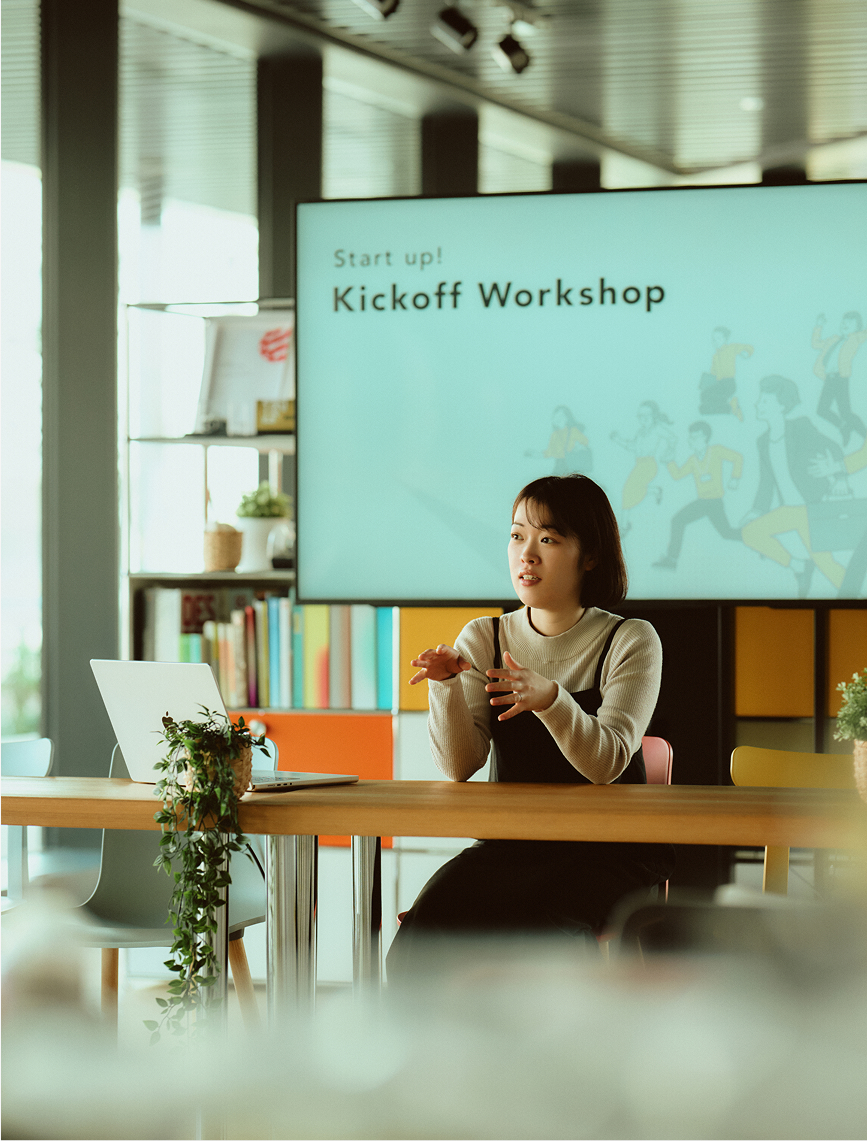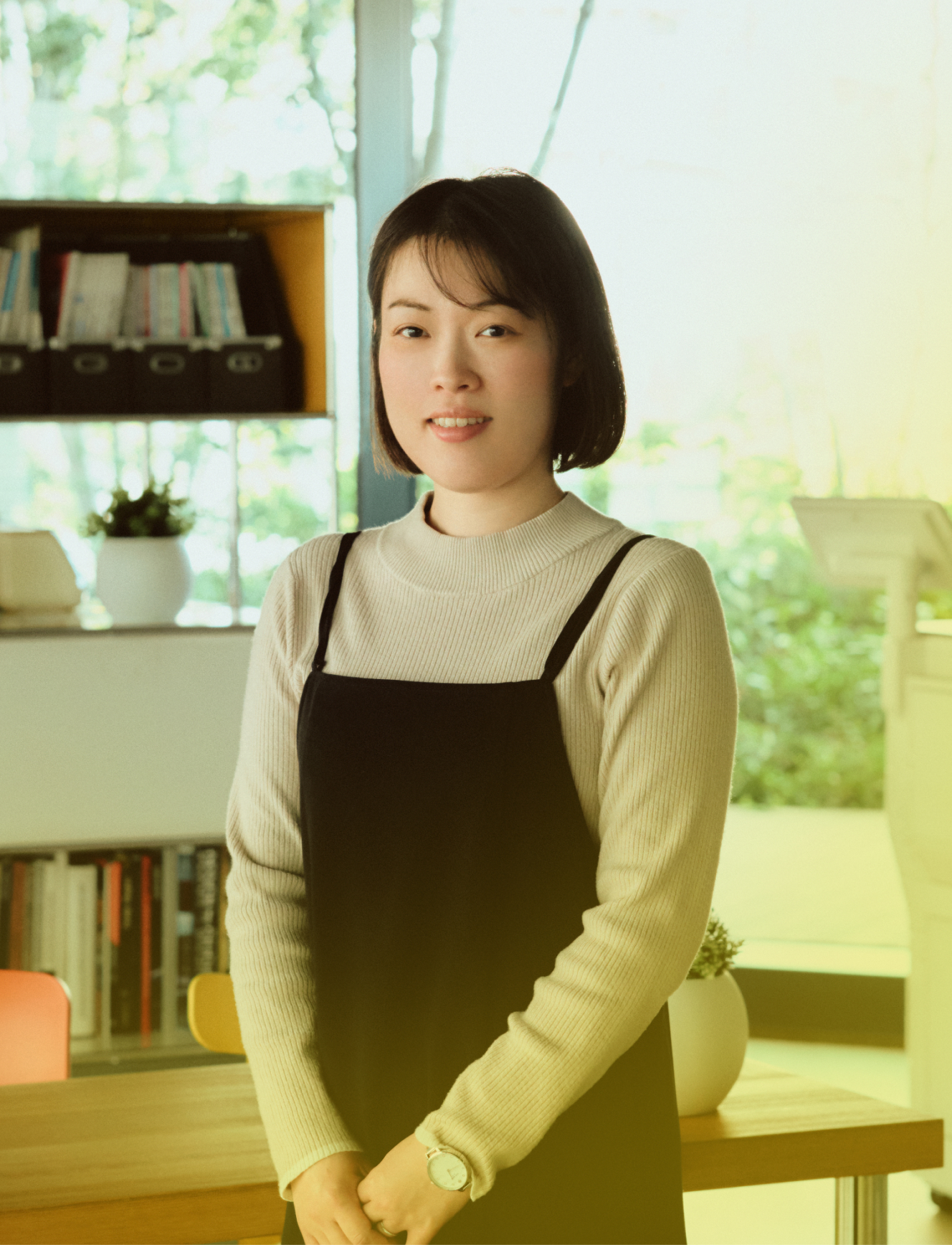コンポーネント番号: 21
01
Job details

コンポーネント番号: 22
Supporting the first step of new business development as a service designer
コンポーネント番号: 3
“What kind of camera do users truly want?” This question first came to me when I was working on
mechanical design for cameras. This led me to explore design thinking—a user-centered approach to
creating value. Through user interviews and participation in external workshops, I became
increasingly drawn to the idea of working closer to the user. So, in 2019, I used Nikon’s internal
career-matching system to transfer to the Design Center.
The Service Design team works
alongside different business units to help build organizational structures and develop new business.
For example, we create frameworks that allow sales representatives—who interact with customers on a
daily basis—to share valuable insights for product development. We also design new service models to
accompany product launches. Our work starts with interviews with the requesting business unit,
followed by surveys of experts and users, market analysis, and brainstorming sessions. Once we
solidify the concept and service vision, we work to develop the internal structures and mechanisms
necessary for commercialization. Together with the project team, we take the first step in turning
ideas into reality.
コンポーネント番号: 4

コンポーネント番号: 21
02
The significance of the designer

コンポーネント番号: 22
Using the skills of research and visual expression to align team members
コンポーネント番号: 3
“A designer’s strength lies in organizing and visually expressing information,” as my manager often
says. While business planning teams can also build new business frameworks, my experience working on
numerous projects has led me to understand just how important this process is.
The goal
of visual expression is the establishment of shared understanding. What starts as verbal discussion
becomes tangible when translated into a diagram. From the beginning to the end of a project, visual
expression is an ongoing process. At the stage of organizing challenges, we visually express the
flow of existing business processes and identify issues that arise at each phase. This includes
structuring user information, analyzing interview results, and mapping out the final service
framework. By making everything visible, we ensure that all team members share the same
understanding, enabling the project to move forward smoothly.
Visual expression is just
as essential in research. Many projects involve conducting interviews with users and industry
experts to uncover their challenges and needs. However, simply asking, “What problems do you face?”
often yields little response. So, we particularly focus on drawing out tacit knowledge and latent
needs that users themselves may not even be aware of. To do this, we carefully design each session
to encourage open discussion, ensuring an environment where insights and ideas naturally emerge.
This structuring of discussions can often reveal previously unnoticed user issues. Seeing the value
in these insights, business units often express their appreciation for our approach.
コンポーネント番号: 4

コンポーネント番号: 21
03
What I value

コンポーネント番号: 22
The first step can determine the success of a project.
コンポーネント番号: 3
The very first task in any project is to define its goal. Sometimes, business units come to us with
a clear objective, but more often than not, the vision is still vague. Without a well-defined
purpose, a project can easily stray from its core value. So, we encourage teams to first ask the
question, “Why are we undertaking this project?” This process helps uncover the fundamental issues.
By clearly defining what we aim to achieve, we ensure that the project is truly meaningful.
The
scope of support for a project I am currently involved with has expanded beyond the initial
expectations. Originally, the request was to collaborate on the promotion of a new service for a
specific piece of equipment. This was priced at several hundred million yen per unit, posing a
significant purchase barrier. To mitigate this, the business unit initially considered a
limited-period trial-based service model. However, as we organized the details, it became clear that
the service concept itself needed further refinement. Through ongoing discussions, the business unit
also began questioning their initial goals, and realized the need for deeper exploration.
To
refine the service, we conducted interviews with target companies. Using the insights we gathered,
we clarified how the new service would deliver value to customers and aligned internal efforts
accordingly. The internal framework for implementation is also taking shape, bringing us to the
final stages before commercialization. We are now close to meeting the key requirements for business
launch, such as revenue viability and securing the necessary personnel. Only a select few projects
make it to full commercialization, and we are closely monitoring its progress as it nears
completion.
コンポーネント番号: 4

コンポーネント番号: 21
04
Looking ahead

コンポーネント番号: 22
Highlighting Nikon as a pioneer in service design
コンポーネント番号: 3
Service design methodologies are being tried and tested around the world on a daily basis. We are constantly exploring better ways to conduct interviews and create an environment where ideas can flow freely. As we build our track record within the company, we aim to develop a uniquely-Nikon approach to service design. My vision is for Nikon to become recognized by other companies as a leader in this field.
コンポーネント番号: 4

コンポーネント番号: 13
*Title and work duties are those at the time of interview








